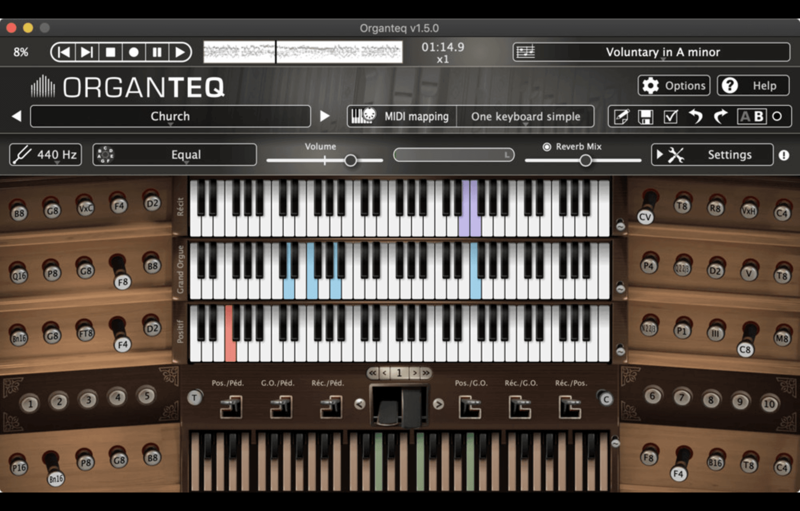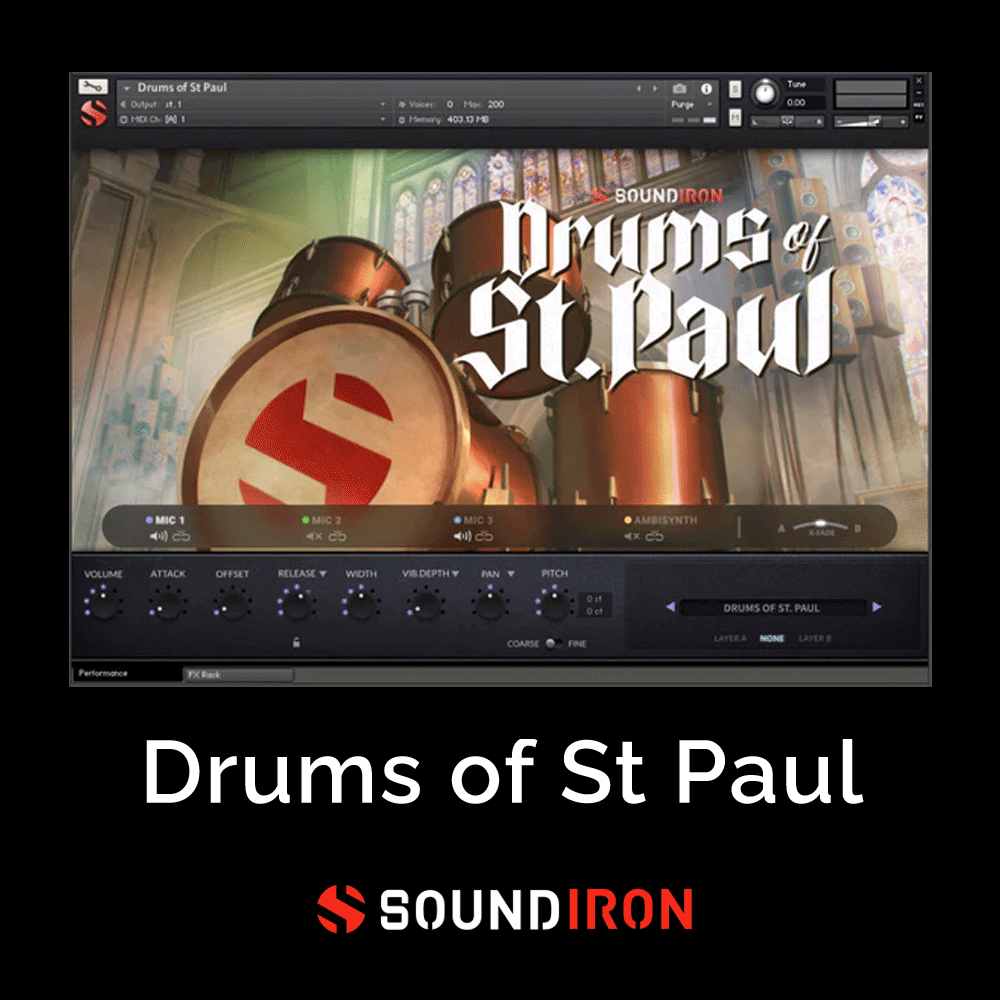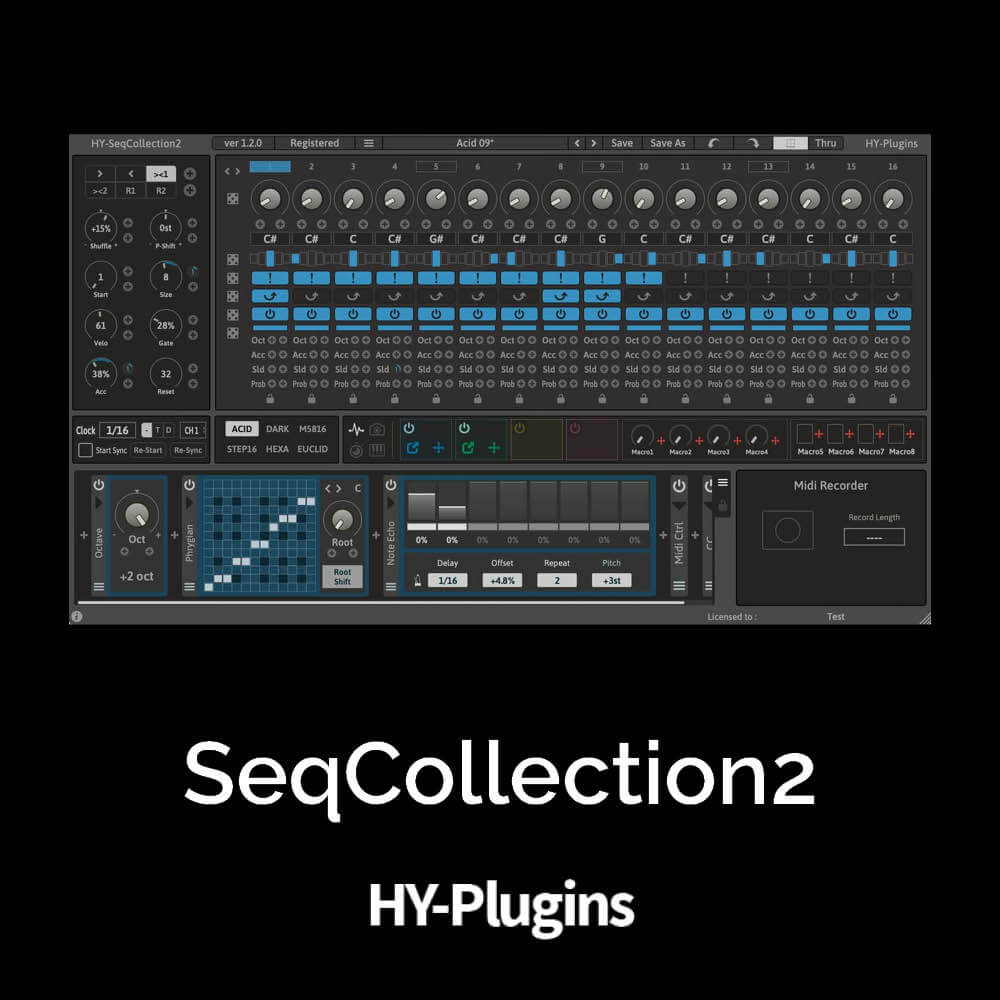

Organteq 2
Pianoteq
Virtual Pipe Organ Instrument
The Modartt Organteq from Pianoteq is a virtual instrument that gives you the sound of a pipe organ, the sort you'd hear in a church. The organ has been physically modeled, and the virtual instrument can operate in standalone as well as within any DAW supporting AU or VST plug-in formats.


New generation of physically modelled pipe organs
Organteq offers realtime synthesis of organ pipes sound based on physical model. By capturing the complex physics of flue and reed pipes, it brings a vivid instrument of stunning playability and breathtaking realism. Everything in Organteq can be tweaked – from the composition of the organ to the sound of each pipe – making it possible to reproduce a wide variety of existing organs or to explore unknowns musical lands.
Organteq offers over four thousand pipes, inspired from many great organ builders of French Romantic and German Baroque periods : A. Cavaillé-Coll, G. Silbermann, T. Tröst and many others. These 68 organ stops, ranging from 32′ to 1′, can be assigned to three manual keyboards with a five-octave range, and a pedal keyboard with thirty-two notes. Every pipe of every stop can be voiced to your taste through many user parameters.
Physical modelling
The core synthesis algorithms of Organteq are based on aeroacoustics of the organ pipes. The equations of the air jet growing and impacting the labium, the equations of the beating reed, as well as the ones that describe the pipes resonances, are used to synthetize organ pipe sounds.
In addition, the acoustics radiation from the pipes ends to the division box first, and then to the main space. This makes it possible to listen to the organ sounds in various configurations.
The use of physical modelling has many advantages:
- Small file size: The installation file size is just 30 MB (Megabytes) in contrast to sampled virtual organs which require up to 64 GB (Gigabytes).
- Quick load time: Organteq loads quickly thanks to the limited file size.
- Variability: When playing a repeated note on a real organ, you can hear subtle variations in the attack, even with sustain. The physical model reproduces these variations. Thus, you are not stuck to the static nature of samples.
- Tweak the model: Access to physical parameters makes it possible to tweak the sound of the pipes in unique ways, including reverb effects.
Features
Advanced Physical Modeling
- jet/labium aero-acoustics and beating reed
- pipe resonances
- sound radiation
- division acoustics
- room acoustics
Large collection of unique stops
- Unique stops from 32′ to 1′:
- 34 German Baroque stops
- 34 French Romantic stops
Versatile console
- 3 manual keyboard and one pedalboard
- Up to 50 customizable stop slots
- 3 stop-per-stop assignable and customizable expression pedal
- 4 monophonic couplers (bass and treble)
- 24-step stop-per-stop assignable crescendo pedal
Advanced Output Settings
- Various output setting
- noise volume, stereo width, C/C# separation
- reverb settings
- audio routing mix matrix up to 8 channels
- division box parameters (EQ, box reverb, blending with room acoustics)
Pipe-specific parameters
- each stop can be voiced pipe-per-pipe:
- volume
- detune
- brightness
- air noise
- wind jitter
- chiff amount
- tremulant sensitivity
Built-in presets
- German Baroque
- French Romantic
- Historical organs
- Experimental organs
Ergonomic UI
- adapted for organists using up to 3 keyboards
- but playable with only one keybaord
- Easy MIDI mapping with MIDI learn feature… yet fully customisable
- Touchscreen compatibility
- VoiceOver (macOS) and Narrator (Windows) integration
Mac:
- Os 10.7 or later
Windows:
- Windows 7 or later









